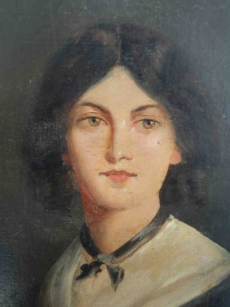
Email: ZYVC057@live.rhul.ac.uk
Total Article : 213
About Me:I'm a graduate student studying International Criminal Law and first started writing for King's News almost 4 years ago! My hobbies include reading, travelling and charity work. I cover many categories but my favourite articles to write are about mysteries of the ancient world, interesting places to visit, the Italian language and animals!

Love and friendship
Love is like the wild rose-briar;
Friendship like the holly-tree.
The holly is dark when the rose-briar blooms,
But which will bloom most constantly?
The wild rose-briar is sweet in spring,
Its summer blossoms scent the air;
Yet wait till winter comes again,
And who will call the wild-briar fair?
Then, scorn the silly rose-wreath now,
And deck thee with the holly’s sheen,
That, when December blights thy brow,
He still may leave thy garland green.
(By Emily Brontë).
About the poem..
The title of this poem tells us about the two themes discussed ‘love and friendship’, topics which are dear to all men. The poem seeks to relate these two values to nature through the use of multiple metaphors. In the first stanza the speaker uses a simile to compare love to a ‘wild rose-briar’, which can symbolise passion, and friendship to a ‘holly tree’, which can symbolise peace. The poem continues to describe these two values as elements of nature and part of the environment. The beauty of love is described throughout the poem, yet the speaker does not neglect the stings love can bring as, once winter arrives, the wild-briar may not be so beautiful and appealing. It may then be that love might not be as passionate and perfectly beautiful as we first imagined; we can almost be so dumbstruck by the appeal of love that we don’t consider what will happen when winter comes. The last of the three stanzas is then focused on the holly three which, even in the midst of winter, will still be green and lovely without losing its appeal. It is then for the reader to realise that, through comparing love and friendships to nature, the speaker is telling us that even when love dies out friendship will remain. Even when passion dies and love does not turn out as we initially hoped, friends will always be there – just like the holly tree.

About the author…
The poem is by the English novelist Emily Brontë who was born in 1818 and was the third eldest of the surviving Bronte siblings. Her other two sisters, Charlotte and Anne, were also writers and usually published their work under male pseudonyms (fake names). Charlotte was known as Currer Bell, Anne as Acton Bell and Emily published her work under the name Ellis Bell. Many female writers of the 19th century published their work in this fashion as, living in a patriarchal country, they believed it was easier to be published and recognised as a man at their time rather than as a woman. All four siblings, the three sisters and their brother Branwell, were very close to one another and would work together to write imaginative and creatively complex works from a young age. The siblings had a hard upbringing, firstly brought upon them by the death of their mother and then by the passing of their two older sisters, which influenced the sisters deeply as can be seen in their writings. The sisters were very successful in their careers and each published a novel which can be considered as a binding piece of English literature: Charlotte wrote ‘Jane Eyre’, Anne published ‘The Tenant of Wildfell Hall’ and Emily ‘Wuthering Heights’, which is her only novel.
Image 1: https://blogperfectlife.files.wordpress.com/2014/10/img_37051.jpg
Image2: http://alishagratehouse.com/wp-content/uploads/2013/09/Beautiful-Emily-Bronte-portrait-painting-410.jpg

0 Comment:
Be the first one to comment on this article.